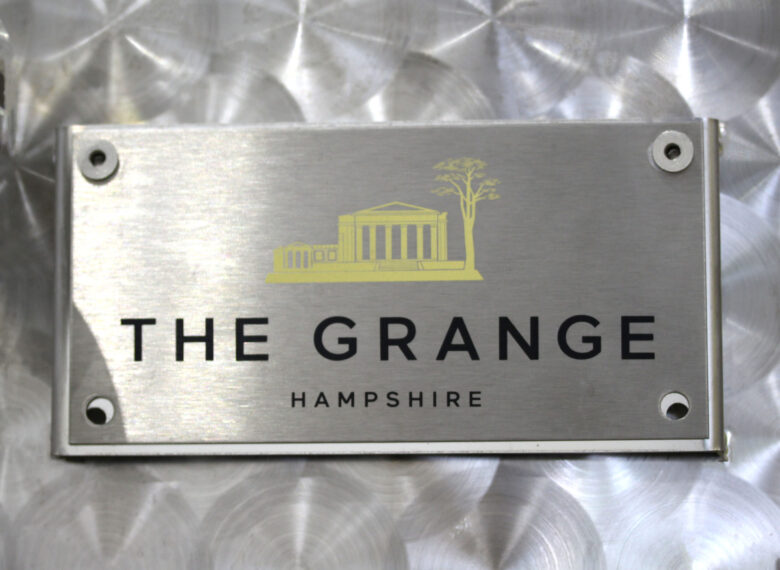
Tanks for everything…
A great article from Laura Hadland written for Vineyard Magazine where she caught up with our very own Harry Pickering.
For those approaching the subject for the first time, there can be a bewildering array to choose from. Materials might include stainless steel, concrete, oak, plastic or even clay. Each comes with its own advantages, disadvantages and price tag. So how does one negotiate the tricky business of tank selection?
Tank selection
- Look at vineyard size and predicted production volumes. Not only do vessels need to be able to accommodate all of the juice produced at harvest, but consideration needs to be given as to how this will be divided up by style.
- This leads us on neatly to style and quality considerations. Different materials offer the potential for different outcomes at the end of the process. Stainless steel is perhaps the most common and relatively cost-effective material, leading to crisp, clean wines. Oak vessels come at a significant price but can add more complex layers of flavour to the finished product.
- For some winemakers, environmental impact and sustainability are at the heart of their working practices. For them, the environmental impact of their tanks – how they were produced, how energy efficient they are and how recyclable they will be at the end of their life – can be a critical factor in selection.
- I’ve alluded to the price already, but it isn’t just the upfront costs that need to be considered. Maintenance and the longevity of different tank types also need to be factored in so that an informed investment can be made that will keep the business in good shape over the years and decades to come.
A material question
Let’s look at some of the different types of tanks that are available in more detail. What do different materials add – or take away – from the finished wine?
Mixing materials
Stainless steel has become the industry standard. It’s an inert vessel, easy to keep clean and relatively affordable. But sometimes, a pure expression of the fruit isn’t all that’s required. Some winemakers look to add depth and complexity to their wines by blending liquid fermented in a range of materials.
In Hampshire, the Grange Estate’s Classic NV English Sparkling Wine is fermented 86% in stainless steel tanks and 14% in old oak barrels before undergoing a 33-month lees ageing process in bottle. The Grange Estate have recently moved into their own newly-built winery facility. Until 2022, their vinification took place at Hattingley Wine Estate, but now winemaker Harry Pickering has greater control over the vessels he sources and how he uses them to achieve the depth and complexity of flavour he is looking for.
“We ferment a bit of everything in barrel as well as in tanks. It gives you two different components to play with from the same fruit. For us, we find anywhere between 80% to 90% for the stainless steel tank fermentation is where things sit nicely.
“The tank components are the bones of the wine when we’re looking at blending, that’s the main structure. The fruit components are more obvious and it’s more structural in terms of acidity. By fermenting in tanks you get the pure expression of the fruit because they are in the most inert vessel and completely unadulterated.
“On top of that, you start to layer the oak. The majority of the oak we’ve used up until now is old oak, fourth fill. Those barrels come from a Tonnellerie in Champagne. They sell Champagne barrels to producers in Bordeaux and Burgundy. After they’ve had the yeast in them for four years fermenting white wines, they take them back and distribute them out to people who want older oak. The reason for going through this Tonnellerie is purely a reputational thing more than anything, in terms of knowing that the oak you’re going to get is being properly quality controlled. You’re trying to limit any spoilage or microbes being in that wood, so you need to know the provenance of the old oak to limit the risk of contamination.
“The idea is not to impart those oak tannins and give the wine an oakiness. It’s more about the micro oxygenation that you get from the oxygen being able to permeate through the wood during the ferment and ageing, compared to a stainless tank. In a barrel, there is a lot more surface area of the wine in contact with the yeast lees and the surface area of the barrel itself. That allows for more exposure to oxygen and more exposure to the dead yeast at the bottom of the barrel post fermentation. In turn, that leads to autolysis and the breakdown of the yeast. The mannoproteins that you’re getting from the dead yeast soften the wine and add those soft and buttery autolytic characters.
“So the old oak softens and it broadens the palate. That’s adding the flesh onto the bones. We find that between 10% and 20% in old oak is where that sits nicely. It’s about the balance between softening the wines, but still having them maintaining their structure and core personality. They’re not becoming overly flabby, just softening and rounding out the palate.
“Since we’ve had the winery, we are beginning to play a bit with new oak, which adds a third dimension to the whole thing – almost like the accessories that are added to clothing. But the amounts that we are adding are so tiny that you can barely perceive them. We only add about 1% to 5%. It ripens up the fruit and makes the wine a bit more serious. It’s almost like turning the volume up a bit. It’s not about changing it dramatically and making an oaky wine, it’s about adding a bit of perfume, that little bit of personality at the very end.
“Because this is a new thing for us, we’re still working out which Tonnellerie suits our needs. Each year we’re going to use a new one, look at their barrels and see how they work for us. Then we’ll hopefully end up with five or six different Tonnelleries’ barrels in the winery over the next few years, that are toasted to different degrees, and increase volumes depending on who we like most. I imagine it will always be a range of them because they will offer different things and it’s useful to have that diversity for blending.”
READ MORE https://www.vineyardmagazine.co.uk/wine-making/tanks-for-everything/
https://www.vineyardmagazine.co.uk/wine-making/tanks-for-everything/







